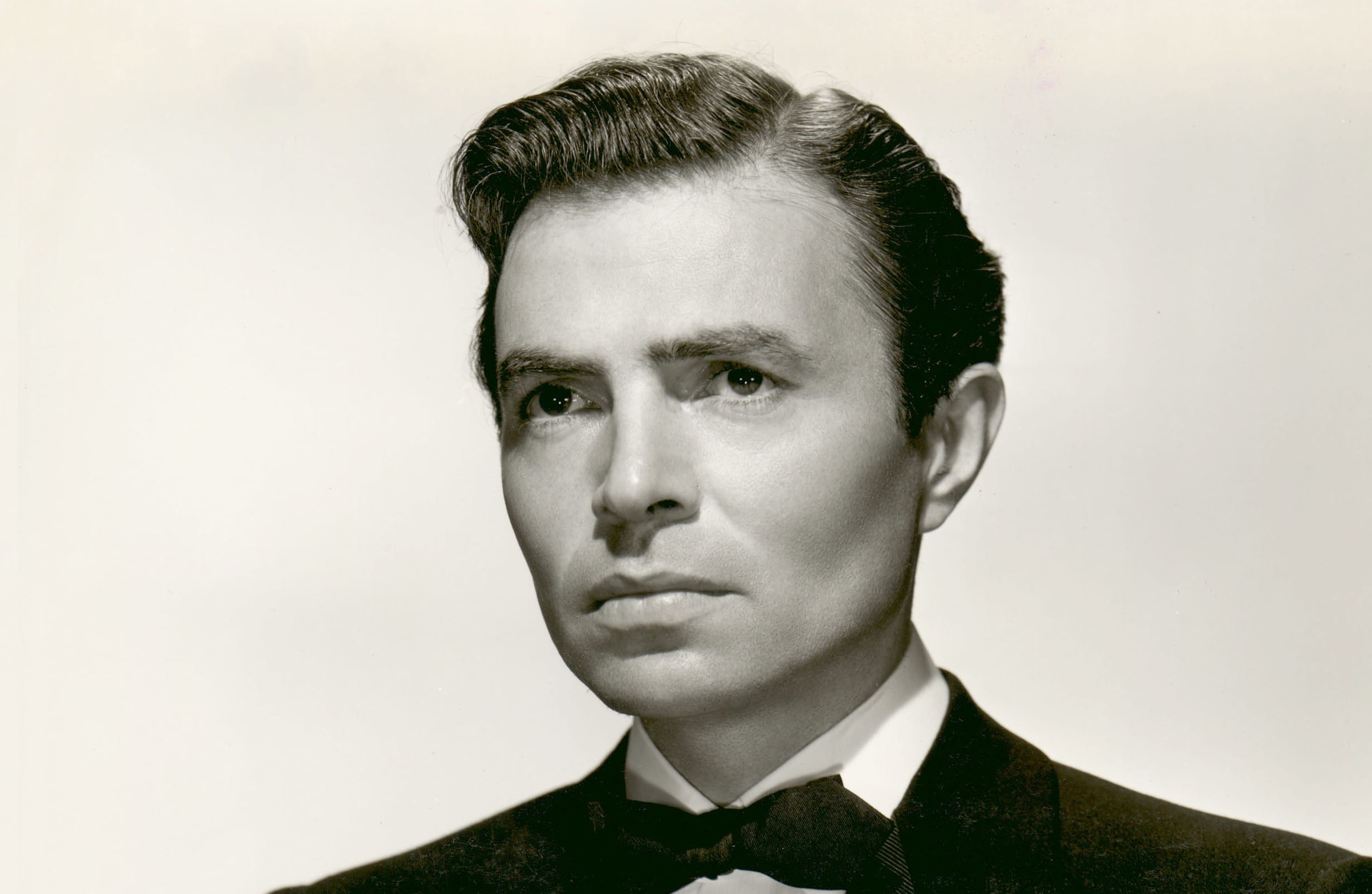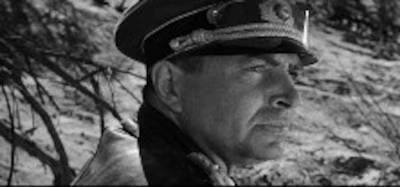James Mason

About
Biography
Filmography
Family & Companions
Bibliography
Notes
Mason is not to be confused with American actor James Mason (1890-1959), who was busy in American silent film but whose career declined with the advent of talking pictures.
Biography
Gifted with one of the most mellifluous and distinctive voices of his era, James Mason managed to convey volumes of emotion while often remaining surprisingly understated. Following some stage experience and roles in British B-pictures, Mason became a star in his homeland via films like "The Man in Grey" (1943), "The Wicked Lady" (1945), and "Odd Man Out" (1947) and was eventually lured to Hollywood. His performances in "The Desert Fox: The Story of Rommel" (1951), "A Star is Born" (1954), "North by Northwest" (1959), and "Lolita" (1962) ranked amongst his very finest. He also appeared in such projects as "Heaven Can Wait" (1978), "Murder by Decree" (1979), and "The Verdict" (1982), all of which made excellent use of attributes that had long endeared Mason to audiences worldwide. Mason's uniqueness and versatility were his greatest assets and served him well throughout his career, particularly when he aged into being one of the finest character players in cinema.
James Neville Mason was born in Huddersfield, Yorkshire, England on May 15, 1909. Following his graduation from Cambridge University, Mason seemed poised for a career in architecture, but the experience of acting in several of Cambridge's dramatic productions prompted him to more thoroughly explore performing. West End exposure led to Mason appearing regularly at the Old Vic Theater in London and with the Dublin-based Gate Theatre Company. He made a very inauspicious movie debut in a 1933 movie directed by Alexander Korda, who fired Mason not long into shooting and recast his role. Thus, Mason's official cinematic bow actually came two years later in the low-budget crime drama "Late Extra" (1935), but the intelligent and well-spoken young actor quickly progressed to starring roles in other "Quota Quickies," along with supporting assignments in grander efforts like "Fire Over England" (1937) and "Return of the Scarlet Pimpernel" (1937). He also became one of the first British actors seen on the brand new medium of television when he was featured in a handful of live dramas broadcast on the BBC in 1938 and 1939.
While starring in the thriller "I Met a Murderer" (1939), Mason fell in love co-star Pamela Kellino, wife of the film's director, Roy Kellino. After separating from her husband, she wed Mason in 1941. During that time, Mason also raised some eyebrows by registering with the British government as a conscientious objector, a move that alienated him from his family for a number of years. Following some additional stage work, he really began to hit his stride in the movie world via roles in pictures like "The Night Has Eyes" (1942) and "Thunder Rock" (1942). Genuine notoriety came via his sadistic upper class antagonist in "The Man in Grey" (1943), and subsequent turns in "The Seventh Veil" (1945) and "The Wicked Lady" (1945) further solidified Mason's reputation and popularity with audiences. He was also particularly well utilized as a determined I.R.A. member in Carol Reed's superb thriller "Odd Man Out" (1947). Thanks to projects such as these, Mason was voted the most popular British star from 1944 through 1947. He eventually succumbed to overtures from Hollywood and relocated to America, but opted to remain a free agent, rather than be locked down by the often restrictive Hollywood contract player system of the time. Mason also accepted an invitation to perform on Broadway, portraying David in the play "Bathsheba" (1947).
However, movies remained his primary focus and Mason would not return to the Great White Way for more than 30 years. Wife Pamela Mason was one of his co-stars in "Bathsheba" and the pair authored the humorous and affectionate book The Cats in Our Lives (1949). Mason half-apologetically stated that he wrote it strictly as a way to make money during a slow patch in his career, but he genuinely loved cats and owned a dozen at one point. Although he occasionally returned to England for local productions, Mason concentrated mainly on Hollywood assignments, which earned him snooty criticism from former colleagues who felt that he was more concerned with money than advancing himself as an actor. Mason copped to the financial incentive years later in an interview, but still showed them up with a series of excellent performances in some fine films, beginning with his turn as celebrated tactician Field Marshall Erwin Rommel in the World War II drama "The Desert Fox: The Story of Rommel" (1951). He was also strikingly good as a valet selling secrets to the Nazis in the superior spy thriller "5 Fingers" (1952), made for the perfect embodiment of Brutus in Joseph L. Mankiewicz's all-star version of "Julius Caesar" (1953), and impressed once again via an encore as Rommel in "The Desert Rats" (1953).
Mason's brilliant, but fanatical Captain Nemo ranked among the highlights of Walt Disney's big-budget epic "20,000 Leagues Under the Sea" (1954) and the actor earned an Academy Award nomination for his moving performance as alcoholic fallen star Norman Maine in the first remake of "A Star is Born" (1954), co-starring an equally magnificent Judy Garland. That year, Mason also made another rare return to the stage when invited by Canada's Stratford Festival to star in their productions of "Measure for Measure" and "Oedipus Rex." In the wake of middling reviews, he decided to return to movies and deftly rode an emotional rollercoaster in "Bigger than Life" (1956), an early depiction of prescription drug addiction that found Mason convincingly swinging from wild euphoria to paranoia induced threats of violence.
As he progressed further into middle age, Mason became a much desired character player. He gave one of his most understated and wholly effective performances as the cultured villain responsible for Cary Grant's travails in Alfred Hitchcock's classic "North by Northwest" (1959) and Mason's customary degree of authority and persuasiveness helped viewers to overlook the occasional juvenile silliness of "Journey to the Center of the Earth" (1959). In the midst of all that activity, Mason suffered a heart attack in 1959, but had no lasting ill effects and soon resumed working. He was awarded a star on the Hollywood Walk of Fame for his film and television achievements in 1960 and gave a remarkable (and remarkably brave) turn as pathetic pedophile Humbert Humbert in Stanley Kubrick's controversial adaptation of "Lolita" (1962). During that time, Mason moved to Switzerland, citing tax concerns as one of the main factors in his decision, but he was also candid in his dislike of Los Angeles and the whole nature of Hollywood.
In 1964, Mason filed for divorce, alleging infidelity on his wife's part. However, it was Pamela Mason who emerged victorious in the end, winning such a large settlement that he was effectively wiped out. In need of money, Mason agreed to appear in some less than stellar films in the years that followed, but also continued to operate at the height of his craft in more ambitious fare like the historical adventure "Lord Jim" (1965) and the hit romantic comedy "Georgy Girl" (1966), for which he earned a second Oscar nomination. Luckily for Mason, much of the worst work he did during that era - notably, the disastrous 1970 black comedy "The Yin and the Yang of Mr. Go" - was not widely seen. However, that was not always the case. In regards to the spaghetti Western "Bad Man's River" (1972), Mason stated that he had signed on to the lowbrow action comedy for some quick cash and a trip to Spain. Thinking it would never be widely distributed, he was mortified when "Bad Man's River" got a large and well-publicized theatrical release in England.
Whatever damage was done to Mason's reputation by these weak movies was fairly minimal, thanks to the fine dramatic turns he continued to give in productions like the twisty movie industry mystery "The Last of Sheila" (1973) and the large scale made-for-TV feature "Frankenstein: The True Story" (NBC, 1973). In keeping with the established pattern in the American phase of his career, that work was followed by his casting as a slave owner in the embarrassingly racist and inane exploitation film "Mandingo" (1975), perhaps the nadir of Mason's entire career. Good fortune soon smiled upon him again, however, and he was wonderful as an otherworldly bureaucrat in "Heaven Can Wait" (1978), Warren Beatty's popular remake of the 1940s classic "Here Comes Mr. Jordan" (1941), effectively unsettling as an exiled Nazi in "The Boys from Brazil" (1978), and offered an effectively contrasted Dr. Watson to Christopher Plummer's Sherlock Holmes in the underrated mystery "Murder by Decree" (1979).
After an absence from the stage of more than 20 years, Mason headlined the Broadway play "Faith Healer" (1979), opposite his second wife, Clarissa Kaye-Mason (an Australian actress whom he married in 1971), but it attracted little notice and closed after only 20 performances. As the 1980s dawned, Mason published his autobiography entitled Before I Forget (1981) and gave his finest late career turn as Paul Newman's imposingly formidable courtroom foe in "The Verdict" (1982), earning a third and final Academy Award Nomination. When Paul Scofield broke his leg in an accident during the production of "The Shooting Party" (1985), Mason stepped in to replace the stage veteran as the lead in a middling adaptation of Isabel Colegate's novel about the change in British society brought about by World War I. "The Shooting Party" turned out to be Mason's final motion picture. He suffered a heart attack at his home in Vevey, Switzerland and was taken to the University Hospital of Lausanne, where he died on July 27, 1984. In his will, Mason left everything to Kaye-Mason with the understanding that Portland and Morgan Mason, the two children from his first marriage, would then receive what remained after her passing. However, when Kaye-Mason died in 1994, it was revealed that she had put Mason's £15 million estate into a trust apparently overseen by the Sathya Sai Baba religious sect. In November 2000, after much legal wrangling and more than 15 years having passed since his death, the children were able to claim Mason's ashes, which had been secured inside a bank vault in Switzerland. The actor's remains were then buried in a cemetery on the shores of Lake Geneva.
By John Charles
Filmography
Cast (Feature Film)
Writer (Feature Film)
Producer (Feature Film)
Production Companies (Feature Film)
Cast (Special)
Cast (Short)
Cast (TV Mini-Series)
Life Events
1931
Stage debut in touring production of "Rasputin the Rascal Monk" at Aldershot Hippodrome
1933
Performed with Old Vic for season
1933
West End debut in "Gallows Glorious"
1935
Under contract to agent-director Albert Parker; film debut in Parker's "Late Extra"
1936
Under contract to Fox-British
1938
Formed Gamma Productions with Roy and Pamela Kellino
1939
First film as co-screenwriter and producer (also actor and first Gamma production), "I Met a Murderer" (dir. Roy Kellino)
1946
Moved to USA; unsuccessful attempt to form production company with David Rose
1947
Broadway debut in "Bathsheba"
1948
First American film, "Caught", directed by Max Ophuls
1951
First Portland film, "Lady Possessed" (also co-writer; producer), based on novel by Pamela Kellino and co-directed by William Spier and Roy Kellino)
1951
Formed Portland Pictures production company
1953
US TV debut on series, "Omnibus"
1962
Moved to Vevey, Switzerland
1984
Made last film, "The Assisi Underground" (released in 1985)
1993
Career celebrated in a retrospective held at Lincoln Center's Walter Reade Theater in New York City
Photo Collections
Videos
Movie Clip












Trailer












Family
Companions

Bibliography
Notes
Mason is not to be confused with American actor James Mason (1890-1959), who was busy in American silent film but whose career declined with the advent of talking pictures.











